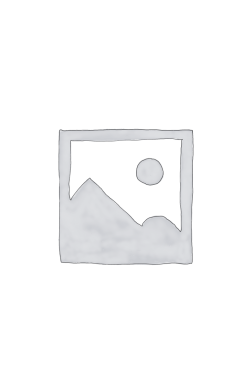Somatic Strategies, Choreographic Technologies, and Notational Abstractions through a Laban/Bartenieff Lens: Making Meaning with Machines
60.00 JOD
Please allow 2 – 5 weeks for delivery of this item
Add to Gift RegistryDescription
A rigorous primer in movement studies for designers, engineers, and scientists that draws on the fields of dance and robotics.How should a gestural interface react to a “flick” versus a “dab”? Versus a “punch”? Should robots reach out to a human counterpart with a direct, telescoping action or through a circuitous arc in space? Just as different movements express the different internal states of human movers, so too can the engineered systems behind robots. In Making Meaning with Machines, Amy LaViers and Catherine Maguire offer a refreshingly embodied approach to machine design that supports the growing need to make meaning with machines by using the field of movement studies, including choreography, somatics, and notation, to engage in the process of designing expressive robots.Drawing upon the Laban/Bartenieff tradition, LaViers and Maguire sharpen the movement analysis methodology, expanding the material through their work with machines and putting forward new conventions, such as capitalization, naming, and notation schemes, that make the embodied work more legible for academic contexts. The book includes an overview of movement studies, exercises that define the presented taxonomy and principles of movement, case studies in movement analysis of both humans and robots, and state-of-the-art research at the intersection of robotics and dance.Making Meaning with Machines is a much-needed primer for observing, describing, and creating a wide array of movement patterns, which ultimately can help facilitate broader and better design choices for roboticists, technologists, and designers.
Additional information
| Weight | 0.4979926 kg |
|---|---|
| Dimensions | 2.7432 × 15.24 × 22.86 cm |
| by | |
| format | |
| Language | |
| Pages | 418 |
| publisher | |
| Year Published | 2023-10-10 |
| Imprint | |
| Publication City/Country | USA |
| ISBN 10 | 0262546124 |
| About The Author | Amy LaViers works at the intersection of robotics and dance. Her work has been presented in arts, engineering, and science venues, including Nature, Merce Cunningham’s studios, Joe’s Pub at the Public Theater, the Performance Arcade, Berkeley, Princeton, and Georgia Tech. She runs the Robotics, Automation, and Dance Lab, a Philadelphia-based nonprofit for art-making, commercialization, education, outreach, and research.Catherine (Cat) Maguire is a movement educator and dance artist. She has been teaching in the Laban/Bartenieff Movement System for over 40 years and works as a faculty member of WholeMovement, a coterie of movement analysts working together to promote movement studies globally. She also teaches ongoing movement classes designed to foster self-expression and body connectivity at McGuffey Art Center in Charlottesville, Virginia. |
| Other text | “Dance artists LaViers and Maguire take readers on a fascinating scholarly tour of human movement and offer a compelling program for roboticists, technologists, and designers seeking fresh perspectives on human-machine interaction.”—Naomi Ehrich Leonard, Edwin S. Wilsey Professor of Mechanical and Aerospace Engineering, Princeton University“By capturing both the appearance of movement and its meaning through novel notation, LaViers and Maguire ask us to actually move and use that movement to innovate computational movement analysis and robotic design.”—Thanassis Rikakis, Dean and Professor, Iovine and Young Academy for Arts, Technology and the Business of Innovation, University of Southern California“LaViers and Maguire bring their deep choreographic knowledge of dance to those who want to ‘make robots dance.’ By moving towards fundamental felt meaning-making processes, better robot interactions can be designed.”—Kristina Höök, Professor, KTH Royal Institute of Technology; author of Designing with the Body: Somaesthetic Interaction Design (MIT Press) |
| Table Of Content | Preface ix Acknowledgments xvii Electronic Resources xix Prelude: Opening with Embodied Perspectives 1 Introduction: Inviting Engineers into Movement Studies 3 I Making Meaning through Movement 1 Noticing Movement: Meaning, Measurement, and Experience 27 2 Studying Movement: Somatics, Choreography, and Notation 47 3 Constructing Movement: Somatic Strategies, Choreographic Technologies, and Notational Abstractions through a Laban/Bartenieff Lens 63 II Describing Movement with an Embodied Taxonomy: The BESST System 4 What Is Moving? The Interconnection of Body Parts and Action (Body) 85 5 Where Is the Movement? Spatial Fiducials for Movement (Space) 113 6 When Is the Movement Happening? The Temporal Perception of Movement (Time) 139 7 For Whom Is the Movement? The Relationship between Mover and Environment (Shape) 1658 How Is the Movement Executed? Movement Quality Enables Shading of Motion (Effort) 185 III Translating Movement to Machines 9 Deconstructing Movement: Case Studies in Expression (Answering “Why?”) 209 10 Notating Movement: Advanced Analysis through Symbolic Representation 243 Conclusion: Understanding Movement 283 Outro: Returning to Embodied Perspectives 293 Appendix A: Symbols in the BESST System 297 Appendix B: Movement Scales 311 Appendix C: Effort Configurations 323 Appendix D: Rationale for the Time Component 327 Appendix E: Pedagogy and Group Work 329 Glossary 339 Notes 359 References 367 Index 383 |
Only logged in customers who have purchased this product may leave a review.






Reviews
There are no reviews yet.